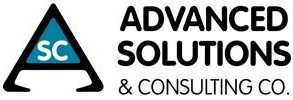Fixed assets such as vehicles, computers, furniture and machinery require large capital investments and may comprise a big share of the asset side of the balance sheet. Managing fixed assets and accounting for them properly are important activities for maintaining the financial health of a business. These processes can also have a significant impact on the tax bill.
An asset management system should perform several important functions. These include tracking and monitoring fixed assets, overseeing equipment and machinery in multiple locations and maintaining a record of retired, sold, lost, or stolen assets. Asset management should also work on improving operational efficiency and lowering maintenance costs by keeping assets in good working order. These factors all affect a company’s operating income.
A Cloud ERP System like Acumatica, which offers Financial Management and Fixed Asset modules, provides complete visibility of fixed assets and depreciation calculations. It can also help avoid costly problems such as unplanned downtime, equipment failures, failures to meet compliance and regulatory standards, and safety or environmental violations. The Financial Management Solution and Fixed Asset module are fully integrated with all other Acumatica financial modules.
Managing the Entire Asset Lifecycle
Acumatica’s Financial Management Solution includes a fixed asset module that enables accounting team members to maintain visibility over fixed assets, along with relevant depreciation calculations and maintenance schedules. Newly acquired assets can be added directly from accounts payable purchases, imported from files, or added individually. The software also allows for the selection of predefined depreciation schedules or custom schedules for accurate accounting and reporting.
The solution can manage multiple property types, including owned property, leases, rentals, and granted property. It can track assets that are leased or rented to others and fixed assets that are still under construction.
Depreciating Through a Choice of Methods
Acumatica’s Fixed Asset module is preloaded with a large inventory of predefined depreciation schedules, e.g., averaging convention, useful economic life, and recovery period. The software allows for use of an accelerated cost recovery system (ACRS), as well as other methods such as modified ACRS, declining-balance, straight-line, a sum of years’ digits, flat rate, and remaining value. Companies can also create custom depreciation schedules. Each depreciation method can include different averaging conventions and useful life and recovery periods.
Maximizing Tax Benefits
The module supports calculations required under IRS Section 179 for a reduced first-year depreciable basis and process reversals after early asset disposal. Companies can create multiple depreciation books, multiple calendars, special depreciation bonuses, and tax benefit recapture capabilities to comply with complex tax rules. Tax and reporting scenarios can be tracked independently from general ledger postings. By having the most up-to-date tax information and tools, an ERP system can maximize tax benefits related to fixed assets.
Making Better Decisions
A Cloud ERP like Acumatica automates asset entry, depreciation schedules, and workflows. The result is to keep accumulated depreciation, asset values and asset class balance reports up-to-date. The system also allows instant access to past information through easy-to-understand reports and dashboards that help to improve business decisions. Acumatica’s Fixed Asset module includes predesigned reports or reports can be customized.
To learn more about how Acumatica can help your business do better with managing and accounting for fixed assets, contact us for a demo.
Additional Accounting Resources
Deferred Revenue and How to Improve the Accounting Process
5 Intercompany Accounting Challenges
Selling and Collecting: Why Accounts Receivable Needs To Facilitate Your Sales Model

